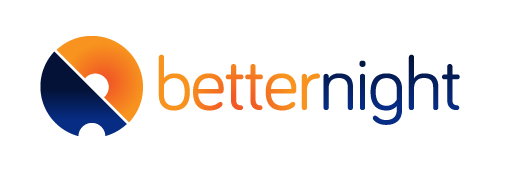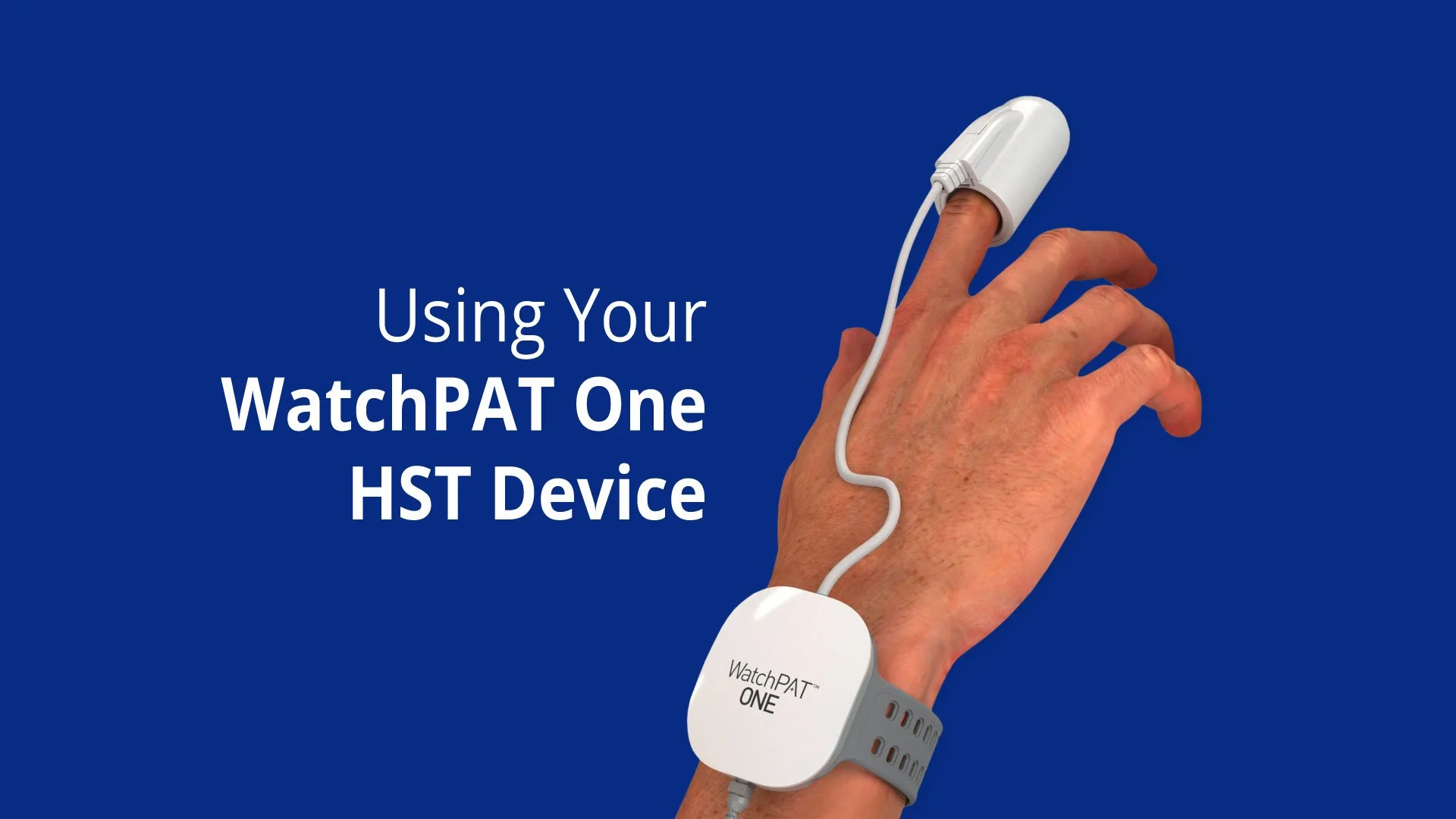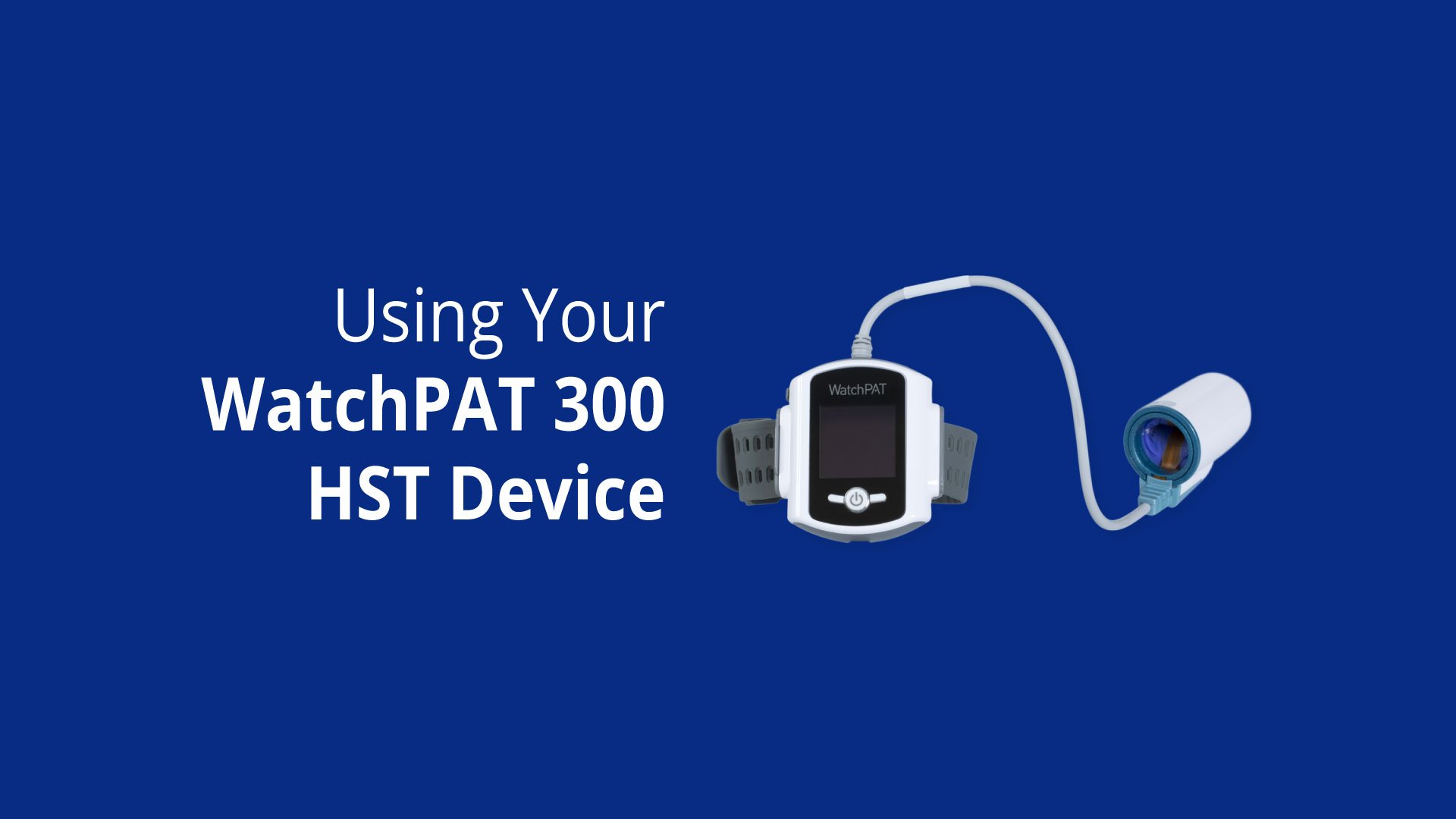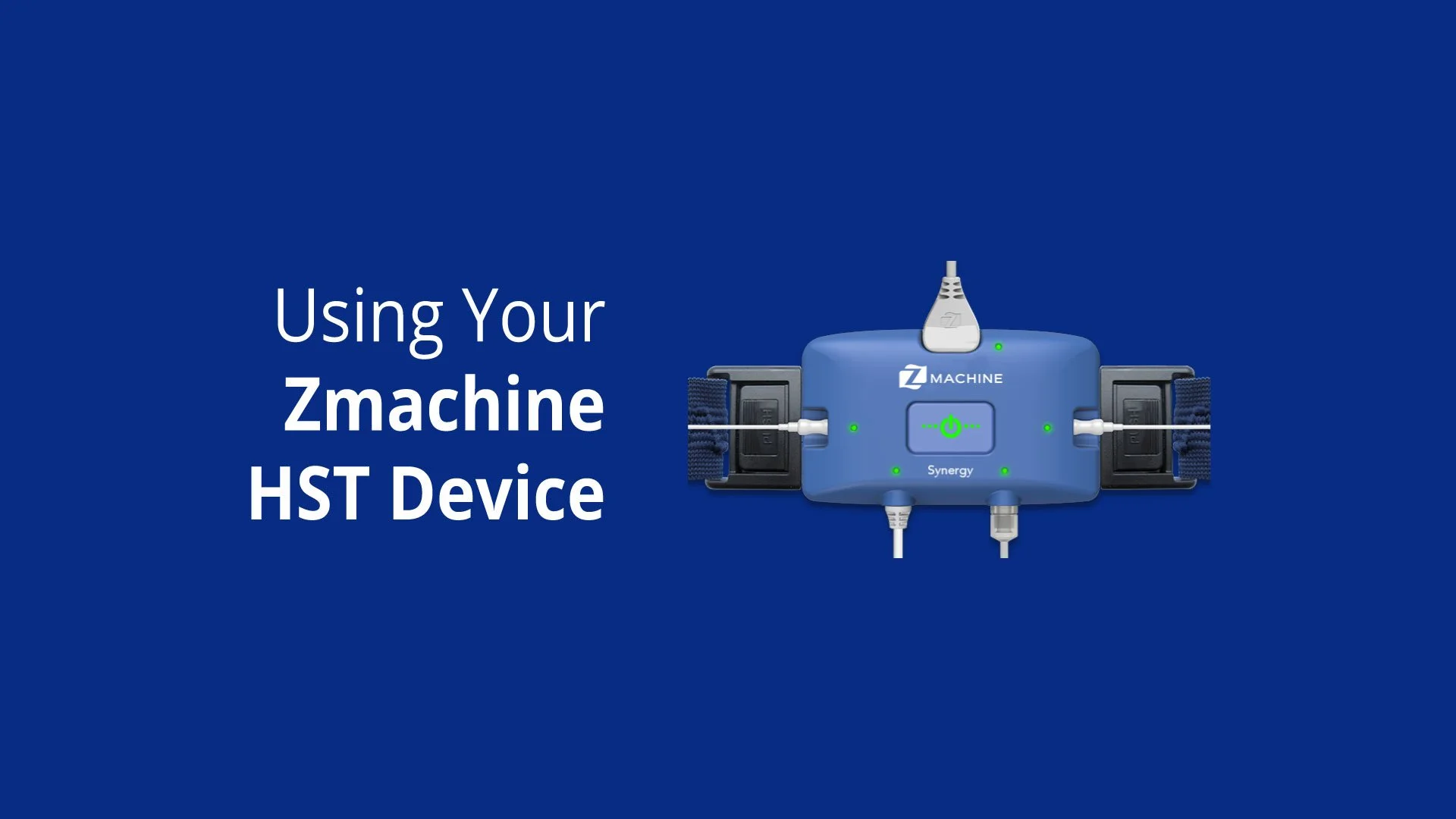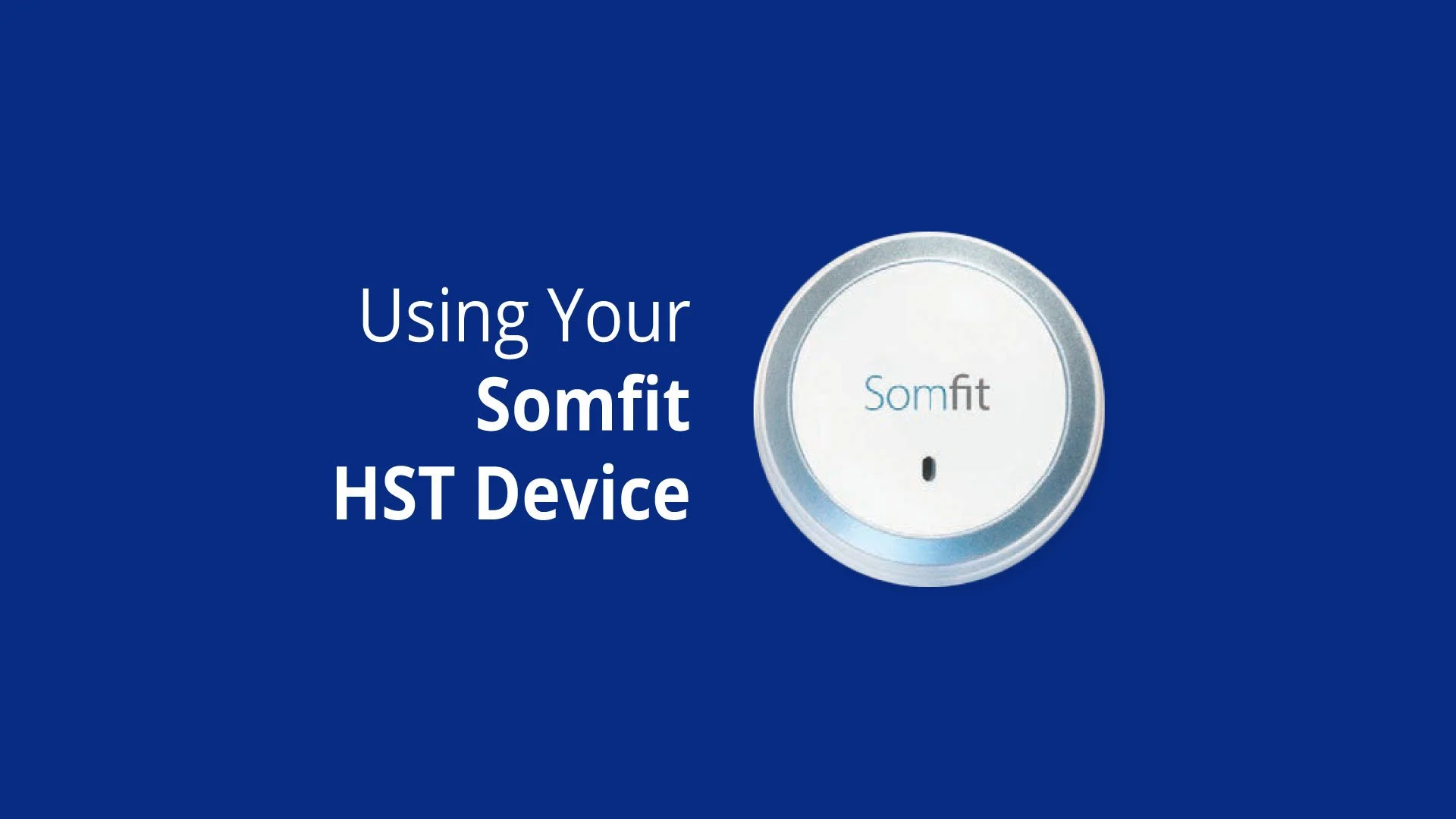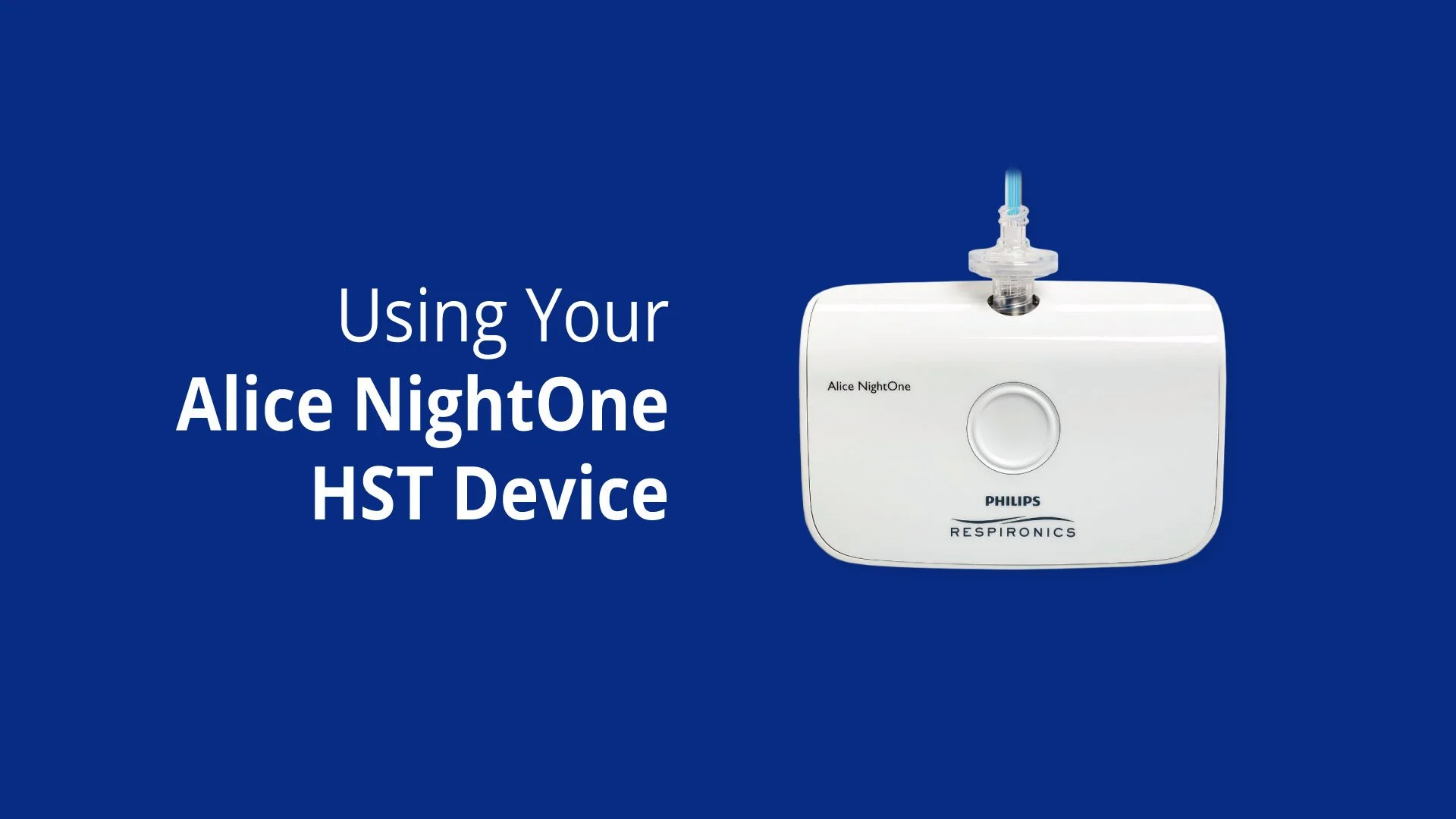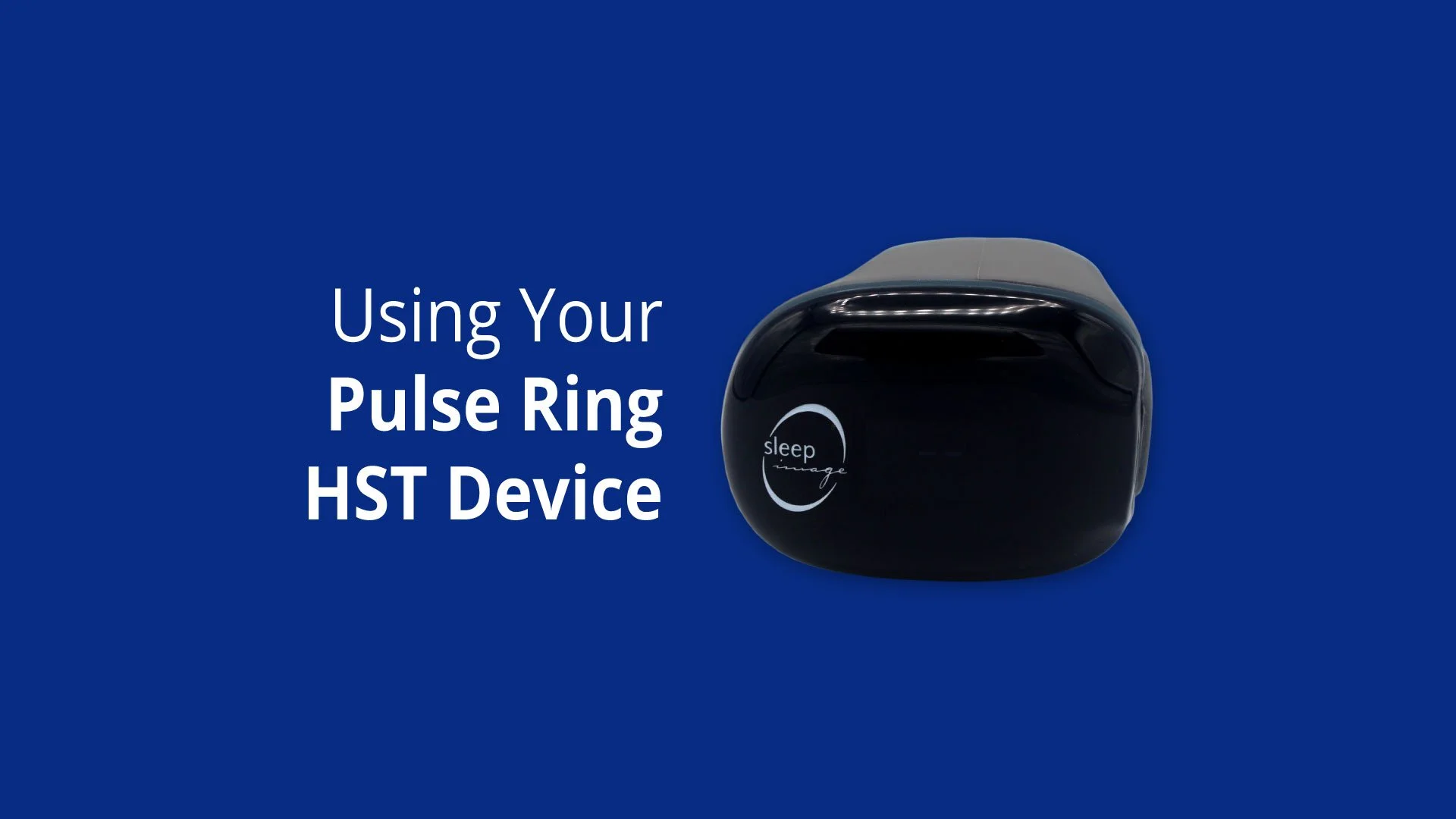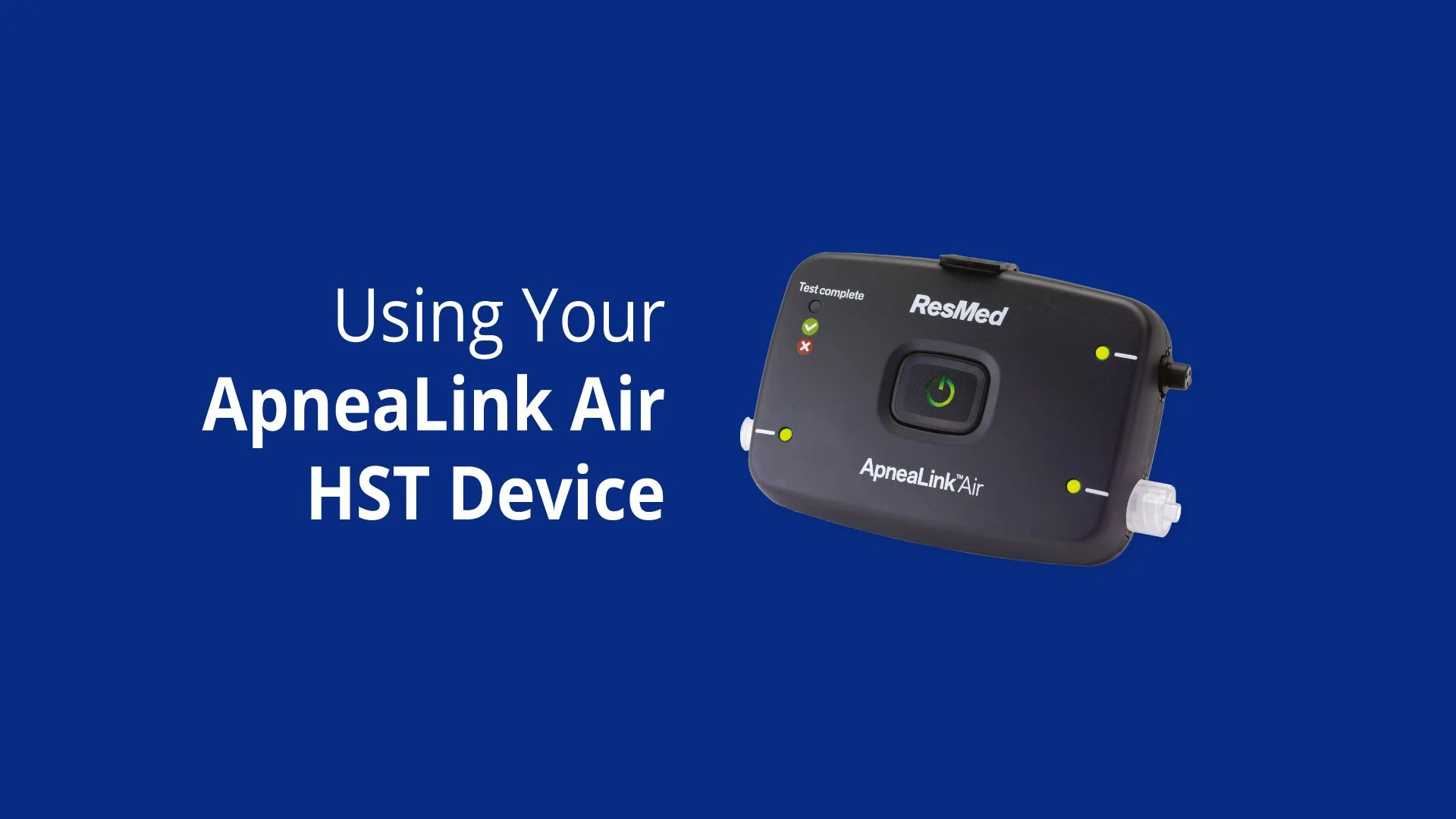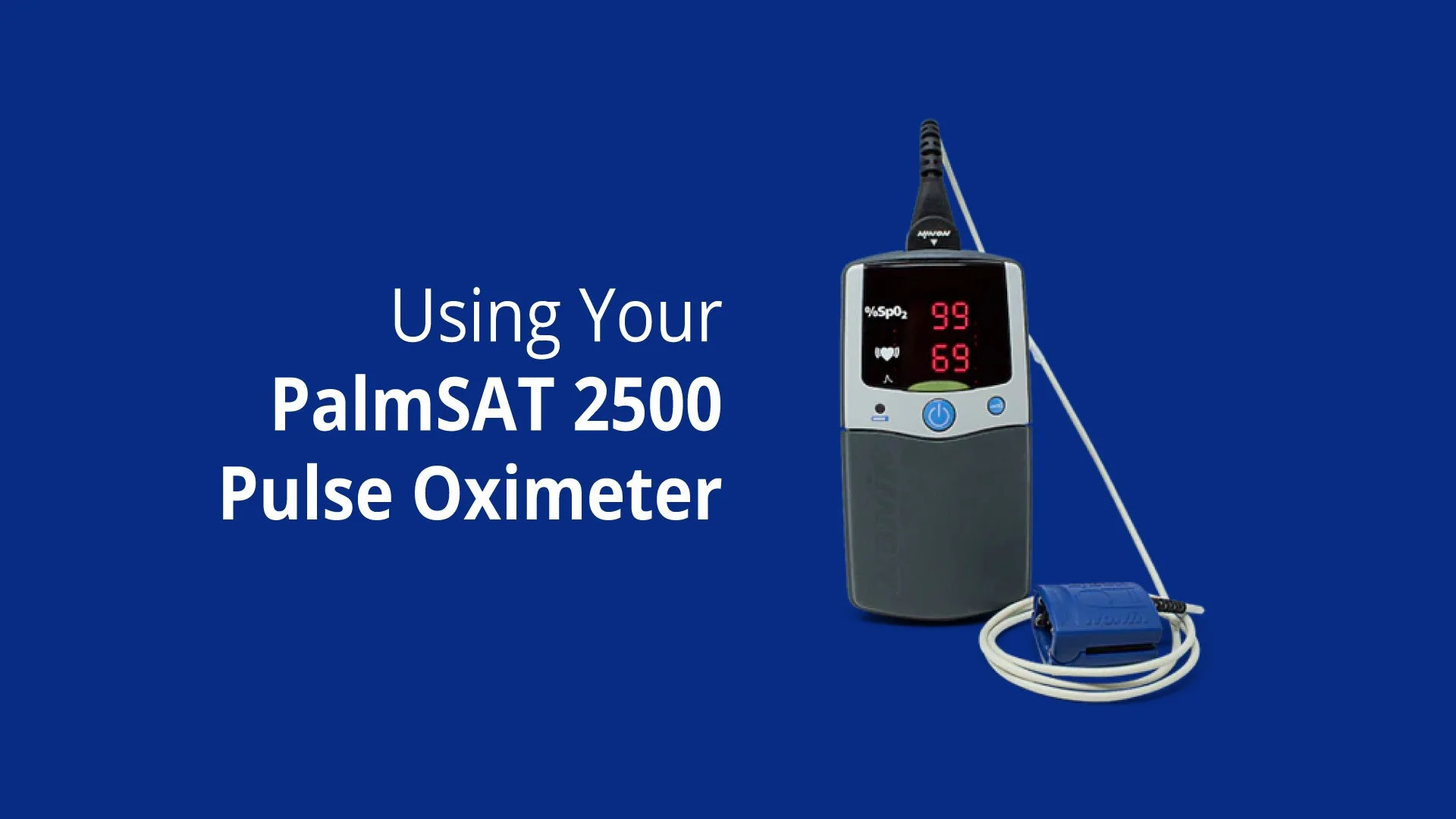
Frequently Asked Questions About Your Home Sleep Test
We understand that taking a Home Sleep Test (HST) can feel unfamiliar, and you may have questions about how it works, what to expect, and what happens next. This section provides answers to the most common questions we receive, from setting up the test to interpreting your results.
-
Sleep apnea results from the partial or complete collapse of your airway at night as you sleep. As a result, the airflow into your lungs is interrupted and so is the flow of oxygen. When the body doesn’t have enough oxygen to support vital organs like the heart, brain and kidneys there can be significant consequences. Because these airway obstructions are occurring at night while you’re sleeping you may be completely unaware of them. When your airway is obstructed your body tries harder and harder to break that obstruction so that oxygen rich air can fill your lungs. This leads to the symptoms of gasping and choking or sometimes the feeling of being underwater and drowning. Often the patient’s bed partner notices that the patient has either slowed down their breathing or stopped breathing altogether and will often nudge them to get them to resume breathing. After the airway obstruction is cleared and air fills the lungs the oxygen level returns to normal in the blood. This cycle of airway obstruction followed by choking and gasping until the airway opens again can occur hundreds of times throughout the night. With each cycle, stress is placed on your heart, lungs, and other vital organs. Frequently, patients experience high blood pressure and a racing pulse during these episodes.
Signs and Symptoms
Most commonly obstructive sleep apnea is associated with being either overweight or obese, however it’s important to realize that up to 20% of patients will be of normal body weight. The most common symptoms of obstructive sleep apnea are snoring, being excessively tired during the day, having trouble concentrating, and getting up frequently at night to urinate.
Consequences of Untreated Apnea
Patients with untreated moderate to severe obstructive sleep apnea are at increased risk of developing high blood pressure, diabetes, and heart disease. In addition, some people experience a worsening of asthma or stomach reflux. Untreated apnea has also been associated with depression.
Fortunately, there is very effective treatment for apnea. If you are at risk for apnea or have a diagnosis of sleep apnea we look forward to helping you with the appropriate diagnostic and therapeutic services. -
A sleep recorder will be mailed to you with instructions. There are a number of different sleep recorders that are used to test sleep at night. The sleep recorder that you receive will be the one that is best for your particular situation. On the evening that you perform the sleep test be sure to follow the instructions that are included with the recorder. As you prepare to perform your sleep test try to keep conditions as close to normal as possible. Sleep in the same bed that you normally sleep in, with the same pillow at the same elevation. Take your medicines as normal. Try to avoid excessive alcohol prior to your sleep test as this can lead to an overestimation of apnea. During the night if you have any questions as to whether the recorder is functioning correctly or about anything else please call the toll-free number as we have support available throughout the night. Most importantly try to relax and have a normal night’s sleep.
What’s Next
Once the sleep test is completed, the data will be scored by a highly trained technician and then sent to a board-certified sleep physician for interpretation. A report will be generated and sent to your doctor.
Don’t Forget to Relax
We have over twenty-five years of experience performing home sleep tests, so you can rest assured that we will take very good care of you. Sweet dreams.
-
Your sleep test will be scored by a highly trained technician and then sent to a board-certified sleep physician for interpretation. A report will be generated and sent to your doctor.
What Makes a Sleep Study Positive?
Our staff will be looking for respiratory events that occurred during the night that signal that you slow down your breathing or have completely obstructed your airway. We will add up the total number of those events that occurred through the night and divide that by the number of hours in the test. The index that results from this tells us the number of respiratory events that occurred per hour and is called the apnea hypopnea index (AHI).
Mild Apnea
If your AHI is five or greater (i.e. more than five events per hour) it is considered positive for obstructive sleep apnea. When the index is between five and 14 the apnea is considered to be mild. The decision to treat mild obstructive sleep apnea requires consultation with your physician and often depends on the presence of symptoms or signs of sleep apnea. These include hypertension, diabetes, loud snoring, excessive sleepiness, getting up at night to urinate, problems with asthma or stomach reflux, or a history of depression.
Moderate and Severe Apnea
If your AHI is 15 to 29 the apnea is considered to be moderate. If your AHI is 30 or greater the apnea is considered to be severe. For patients with moderate or severe obstructive sleep apnea a trial of therapy is usually warranted even in the absence of symptoms. This is because the medical literature suggests that having this many respiratory events per night will likely produce a negative consequence.
Things to Remember
The most important thing to remember when you have a positive test for obstructive sleep apnea is to consult with your physician so that the best therapy plan for you can be determined.
-
Your sleep test will be scored by a highly trained technician and then sent to a board-certified sleep physician for interpretation. A report will be generated and sent to your doctor.
How is The Sleep Study Scored?
Our staff will be looking for respiratory events that occurred during the night that signal that you slow down your breathing or have completely obstructed your airway. We will add up the total number of those events that occurred through the night and divide that by the number of hours in the test. The index that results from this tells us the number of respiratory events that occurred per hour and is called the apnea hypopnea index, or AHI.
What Makes a Sleep Test Negative?
If your AHI is less than five, in other words there were less than five respiratory events per hour, your test will be considered to be negative. If you are not having any signs or symptoms of obstructive sleep apnea, then you and your doctor can determine an appropriate time to revisit the question as to whether you might develop obstructive sleep apnea in the future. If your doctor feels that you are at continued increased risk for developing sleep apnea, then a repeat test at some time in the future might be recommended.
Things to Remember
It is important to remember that no one sleep test whether performed at home or in a laboratory can determine with 100% accuracy if an individual has obstructive sleep apnea. Occasionally, patients who have obstructive sleep apnea will have a test which is negative. So, if you are having signs or symptoms of obstructive sleep apnea it is very important to follow up with your physician as a repeat test or a referral to a sleep doctor for further evaluation might be in order.
-
Once a decision to begin therapy is made there are several options. First and foremost, for overweight patients, is trying to lose some of that excess weight. Because this is not something that can happen quickly or easily, other forms of therapy are also begun simultaneously.
Continuous Positive Airway Pressure (CPAP) Therapy
The most common form of therapy is known as CPAP. CPAP therapy consists of wearing a small mask over the nose or nose and mouth that provides gentle air pressure which flows into the back of the throat and splints open the airway so that it cannot collapse at night while you are sleeping. The CPAP mask is connected by a hose to a small bedside pressure generator that produces the gentle air pressure. CPAP has been found to be a very effective way to relieve the signs and symptoms of obstructive sleep apnea and reduce the harmful consequences that can occur when sleep apnea is left untreated. Overall, CPAP remains the safest and most effective way to address the respiratory events of obstructive sleep apnea.
Oral Appliance Therapy
Another potential form of therapy is an oral appliance. Oral appliances are fitted by dentists who specialize in sleep medicine. An oral appliance is a dental device that helps to gently move the lower jaw forward. By moving the lower jaw forward it also pulls the tongue forward and creates a larger opening at the back of the throat for air to move through. This helps to reduce or eliminate the airway obstruction that occurs while you are sleeping. Oral appliances are most commonly prescribed for patients who have mild to moderate obstructive sleep apnea with minimal reductions in oxygen levels. Patients with more severe apnea are usually begun on CPAP therapy. However, for patients unable to tolerate CPAP therapy it is reasonable to consider an oral appliance.
-
Sleep tests help accurately assess whether certain sleep conditions, such as obstructive sleep apnea (OSA), are present. Sleep tests assess your breathing patterns, snoring, oxygen levels, heart rate and body position. Doctors use one of two types of overnight sleep tests to measure how you sleep. The first is the polysomnogram (PSG). The PSG is performed in a sleep laboratory. The second is a home sleep test (HST). The HST is performed in the comfort of your home. Both types of tests are painless and non-invasive. Rest assured that your BetterNight doctor will prescribe the most appropriate test for you.
HSTs
For the vast majority of patients, an HST is the appropriate first step to assess possible OSA. For this reason and because they are generally more cost effective and convenient, HSTs are typically preferred by physicians and insurance companies. In addition, many patients prefer to complete a sleep test at home because that’s where they normally sleep and are most comfortable.
PSGs
For patients who have significant complicating medical illnesses or for those who are suspected of having a sleep disorder other than OSA, an in-lab PSG may be more appropriate. This study allows for the direct observation of the patient while they sleep and may yield important diagnostic information.
HST Device Instructional Videos
BetterNight offers several different home sleep test devices, each carefully selected with your comfort and accurate results in mind. Below, you’ll find videos to guide you through the setup and use of your particular device, ensuring a smooth testing experience.
Itamar watchpat one hst
** Dispose after use **
Itamar WatchPat 300 hst
Return after use
ZMachine Synergy HST
Return after use
Compumedics somfit hst
Return after use
Philips Alice NightOne HST
Return after use
SLEEP IMAGE PULSE RING HST
Return after use
RESMED APNEALINK AIR HST
Return after use
Pulse Oximeter Instructional Videos
In some cases, your care team may include a pulse oximeter as part of your home sleep test. This small device clips onto your finger to monitor your blood oxygen levels while you sleep. Below, you’ll find helpful videos and instructions to ensure proper setup and use, making your testing experience as easy and accurate as possible.
NONIN PALMSAT 2500
Return after use
Nonin WristOx2 Model 3150
Return after use

